Easter Island is probably the furthest populated place from anywhere on planet earth. The nearest inhabited areas are Tahiti, which is 2,000 miles to the East, and Chile, which is 2,000 miles to the wet. It is a triangular in shape, made from 3 (now extinct) volcanoes, and now has a permanent population of about 7,000 people.
The island has been a source of fascination for decades, mostly because it houses something like 487 Moais—huge statues venerating tribal chiefs from a civilization that rapidly collapsed after reaching a peak population of about 10,000 – 15,000 around the year 1600. The reason for the collapse, combined with the existence of the huge Moai statues has tantalized academic researchers—as well as a fair number of cranks—for many years.
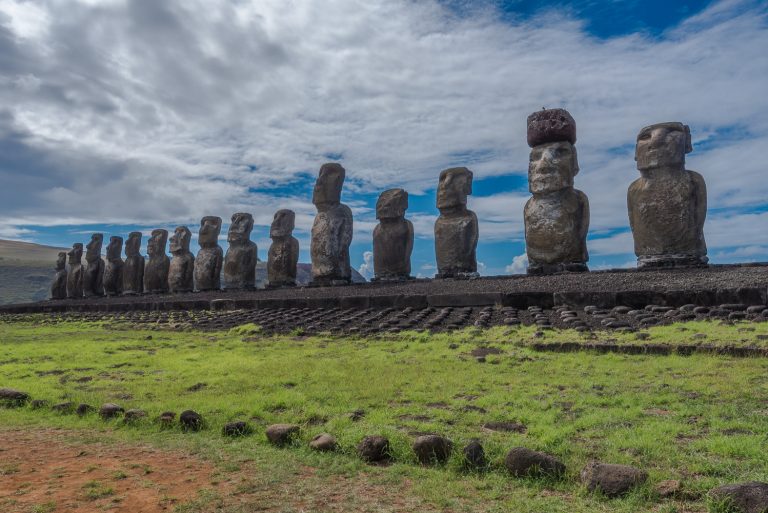
A Row of Moais
We were fortunate enough to be able to explore the island with a small group led by Professor Claudio Cristino, Easter Island’s resident archaeologist. (More on his work is available at this link to PBS: http://www.pbs.org/wgbh/nova/easter/move/team.html). As it turns out the best explanation of the rapid collapse of the Rapa Nui civilization is resource depletion stemming from contests among the tribes to build the biggest Moai to the exclusion of all else. It is a fascinating story and an example of the tragedy of the commons in action. It has nothing to do with crackpot theories about outer space aliens coming to earth to direct earthlings to build huge statues.
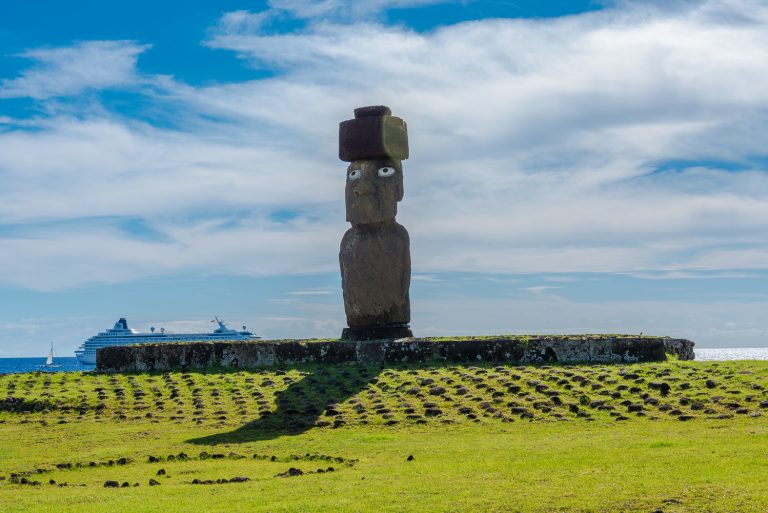
Moai on the Ahu (Altar)
Over the two days of our touring, we got lots of shots of the Moai statues as well as extinct volcanoes. Please see below.
JFB
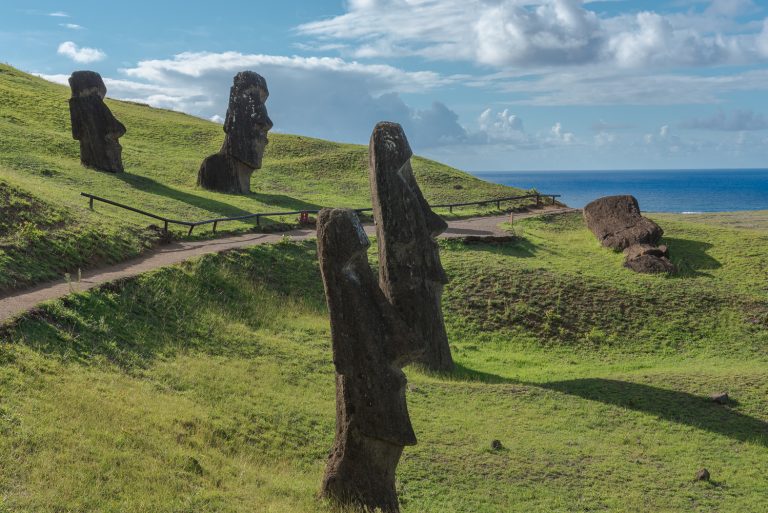
Near Moai Quarry
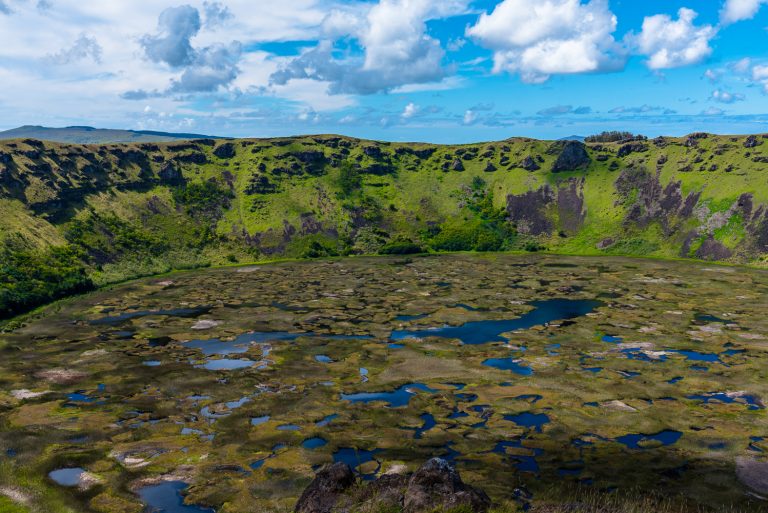
Volcano Lake
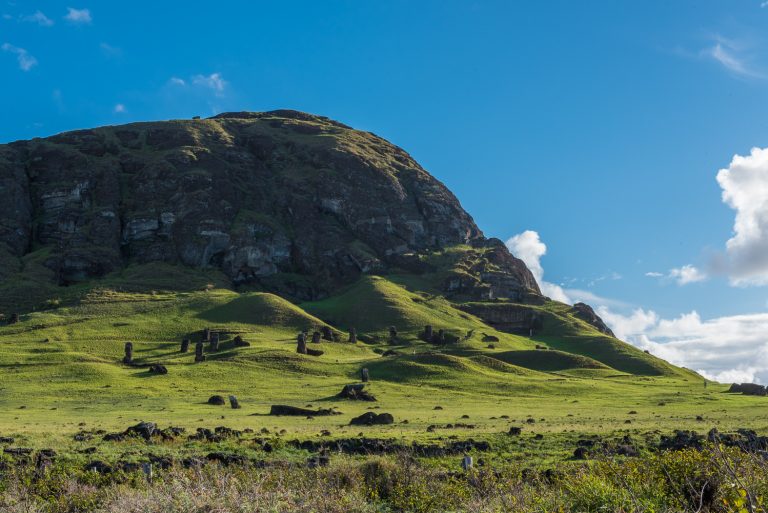
Near the Quarry
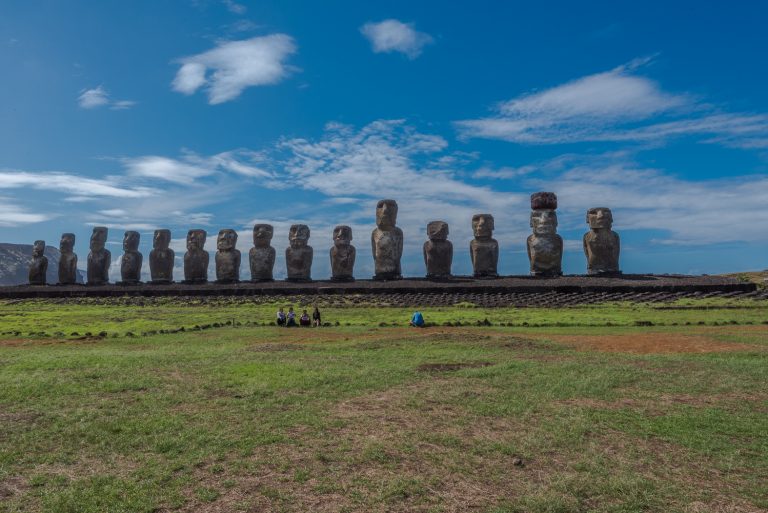
Note size of Moais compared to people sitting up front.

Really fascinating; the story and the photos. Winer how many from the US have been to Easter Island twice?
Be safe.
Jim and Joy